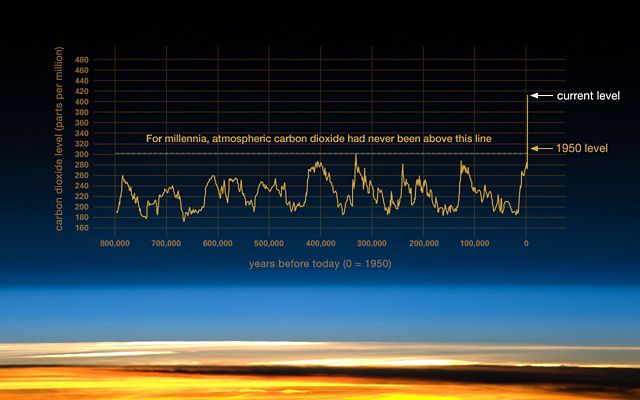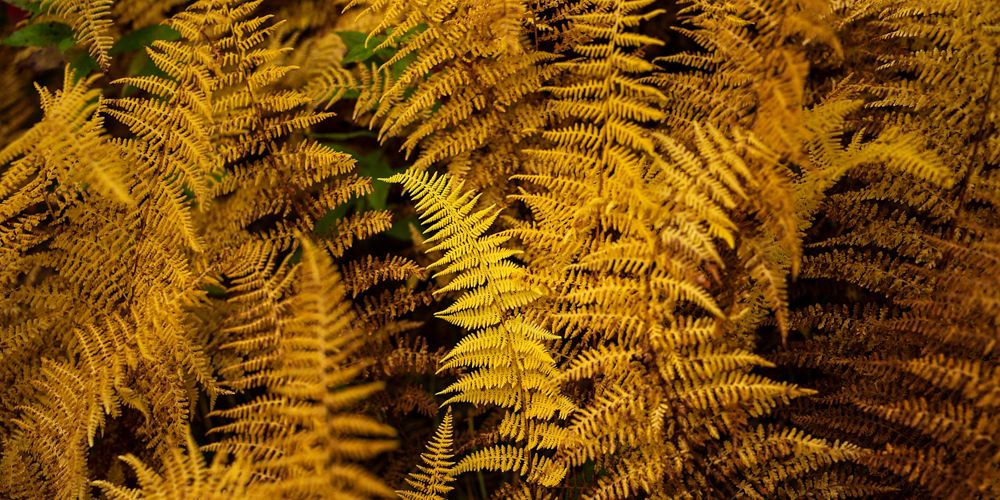
This graphic displays a dotted line corresponding to a level of about 300 parts per million of carbon dioxide. Above that dotted line it reads that for millennia, carbon dioxide had never been above this line. Below the dotted line is a line graph showing the carbon dioxide level corresponding to hundreds of thousands of years in the past. Between 800,000 and 100,000 years ago, the line showed varying levels of carbon dioxide but all well below 300,000 parts per million. However, beginning at zero years before today, where the zero represents the year 1950, the line dramatically spikes to a vertical increase up past 400 parts per million of carbon dioxide, with no signs of abating. In 1950 there was a carbon dioxide level of just over 300 parts per million. Today, there is a level of more than 420 parts per million.
If we split our atmosphere today into 1 million parts, 421 of them would be made of carbon dioxide. And while 421 parts per million (ppm) might not seem like a lot, it’s the most we’ve seen in at least 3 million years. All of this extra carbon dioxide is warming up the planet.
These levels have sped up during your lifetime, but don’t take it personally: that fact is true for everyone alive today. But you know what else can happen in your lifetime? We can take the most important steps to reduce carbon emissions and give our planet the future that is least impacted.
It will take collective action. It will take new technologies. And it will take very old technology—like nature.
Learn more at nature.org/ncs >
Watch Explainer
A Natural Solution To Climate Change

Sign up for nature news updates
Every month we’ll send you our best stories and ways to get involved. Get a preview of a Nature News email.
